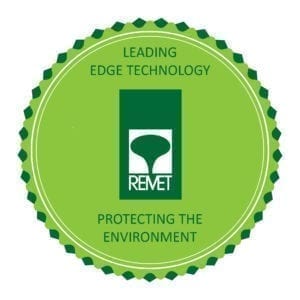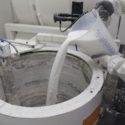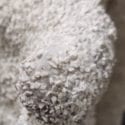Antifoam selection and use
Previously I wrote about the use of surfactants and wetting agents in Colloidal silica slurries. Again many thanks for the many emails and queries that the article provoked, this week I intend to write a little about the selection and use of antifoams. Here goes, I hope you find it useful…
What is a foam and why is it important?
A foam is a substance that is formed when relatively large quantities of a gas are entrained in a liquid, being of low density they tend to float where the bubbles agglomerate and become a discrete gas phase separated by thin membranes of liquid- rather like the “head” on a glass of beer. Foams tend to cause huge problems in industrial and mechanical processes, and they are maintained in check by the use of antifoams. An example of such systems include the use of antifoams in Diesel fuel, if the antifoam was not present the fuel pump would cause cavitation and foaming resulting in the inability to pump the liquid, and as the pump is lubricated by the diesel oil itself, the ultimate destruction of the pump; similarly the mixing f a finely divided powder into a water based carrier in the Precision Investment Casting Process result is in entrained air, and sometimes a surface foam. Foam bearing liquids exhibit usually higher viscosity and a more thixotropic rheology as a result of the entrained air reducing density and flow, and the foam itself often being stable and often firm to the touch. We should not be surprised, then, that the presence of entrained air, or the presence of a surface “mousse” leads to many problems in all surface coating processes, and certainly within the PIC and related foundry industries.
The formation physics of foams is relatively simple, and is based upon the creation of free surfaces, limited by surface tension, and the effect of buoyancy. Whether the foam is stable, unstable and the mechanisms of destabilising a simple matter of surface effects, polarity and (my new word for the week) the Marangoni effect. Its not my intention to discuss these in any great depth, suffice it to say that its relatively simple arithmetic, and its adequately and well described on Wikipedia; and I recommend that you look up the article on “foam”
What is an Antifoam?
The term Antifoams or defoamers tend to be used interchangeably within or industry, and here I will treat them as basically the same term, however for the purpose of semantics and defoam is generally used to break an existing foam, and an antifoam prevents one occurring in the first place. I won’t be differentiating between the two within this blog, but it’s a distinction for the vaults” as they say.
How does it work?
Generally an antifoam is insoluble in the foaming medium and has surface active properties, in other words it’s a surfactant, as discussed last week, however, it has three essential features:
a low viscosity
a facility to spread rapidly on foamy surfaces.
an affinity to the air-liquid surface where it destabilizes the foam’s air liquid interface
The last sentence is pretty grand, but what it means is that this causes rupture of little bubbles into inherently more unstable big bubbles which again rupture and breakdown the surface foam. Entrained air bubbles are similarly agglomerated into bigger bubbles which are more buoyant, and the larger bubbles rise to the surface of the bulk liquid more quickly, where they can be dispersed.
What are they made of?
In my early days of investment casting the antifoam of choice was Octanol / Octan-1-ol, probably closely followed by 2-Ethyl Hexanol, their distinctive floral odour being de rigeur in most shell rooms of the time. Both are fatty alcohols, virtually immiscible in water and being less dense very buoyant. They are still used today for their fast knockdown of firm foams, but their use in commercial products has been limited due to heath concerns regarding chronic exposure, and their very high evaporation rate meaning that they are not very long lived, the system losing efficacy as the volume fraction is lost. REMET® would usually recommend 2-ethyl-hexanol for certain process critical applications
Since the late 1980’s the antifoam system of choice has been based on the use of PolyDiMethylSiloxanes (PDMS), commonly known as silicones. The silica spine of the molecule makes it extremely compatible with colloidal silica, however for addition to a colloid or a slurry it is usually added as a silicone oil emulsion. The antifoam itself consists of a hydrophobic silica dispersed in a silicone oil in a water emulsion. These disperse very easily and have good knock-down characteristics for standing foam, and a very long life within a slurry system. They are available globally and have a range of active ingredient concentrations, so generally a suitable grade can be made available to suit any particular problem. REMET® would recommend one of its “Burst” series of antifoams for general purpose use.
Primary Slurry
Generally REMET® recommends that great care is taken when adding antifoams to primary slurries. A very small amount of antifoam is added to the colloid at point of manufacture, this allows the fast filling of drums and tanks without the liquid foaming over the top of the container, however this is a very small quantity and can be ignored in the case of our examples. If a primary slurry contains too much antifoam, the surface when coated is prone to reticulation due to the Marangoni effect. What this means is that there will be areas of slurry on the wax surface that are thicker, and therefore prone to lift and / or buckling, and areas that are thin, and therefore prone to sandbite. Often the reticulation takes the form of little circles, which when cast causes circular raised and sunken defects to appear on the casting. I’ve often heard these defects referred to as fish-eyes, though I prefer the very descriptive “fried-eggs”.
For these reasons REMET® advises that antifoams should not be used at a concentration >0.05% active ingredient by weight of liquids. Please contact your local REMET® agent if you feel that you need to use more than this, as there may be an underlying cause which needs to be addressed.
Back-Up Slurry
Back-up Slurries are pretty tough things but we tend to find a number of problems associated with antifoams:
The need to make up the slurry is so high that rapid mixing is necessary to keep the production tanks filled, the cycle time is so fast that normal de-aeration isn’t given time to occur.
When a mould is dipped, air escapes from the existing shell, which both prevents wet slurry from getting beneath the bubble, and eventually gets entrained in the slurry before eventually reaching the surface.
The purpose of a backup is only to support the hot-face, so we need not be too concerned with respect to surface finish defects, however, incomplete coverage, air bubbles or a weak shell as a result of a mass of entrained air are all problematic.
REMET® recommends a basic addition of 0.2% active ingredient by weight of liquids in back up slurries but I believe that for most silicone based antifoams, a maximum of 0.75% on a similar basis can reasonably be tolerated. Again, if you feel that you need more, please contact your local REMET® territory manager.
How do I add it?
As always one has to consider that almost anything that is added to a colloidal silica will in some way destabilise it. As such all due care and attention should be spent to ensure that any additive is added in the smallest effective dose.
When adding antifoam REMET® recommends that the Antifoam is let down 9 parts water with 1 part antifoam, and then added slowly to a stirred tank, allowing time for it to be fully dispersed.
Thats the end of my canter through antifoams, please like or share if you’ve enjoyed it or found it useful.
Usual notes and disclaimers
Always read the SDS for every product before you use it.
If you have doubts about the suitability of any product contact your REMET territory manager to discuss. In this forum I can only write in the most general terms so if you have a specific query please write to me.
Unless specifically identified as a specification value, the above chemical, physical and particle size distribution values are typical properties. They are not specification values. Contact your nearest REMET Sales Office regarding product specifications.
Information and/or recommendations based on research and technical data believed to be reliable. Offered free of charge for use by persons with technical skills, at their own discretion and risk, without guarantee of accuracy REMET makes no warranties, express or implied, and assumes no liability as to the use of its products or of any information pertaining thereto. Nothing herein is intended as a recommendation to infringe any patent.
< Back to insights



